Discover the Power of FLUX Models: Tools, Pro, Dev, and Schnell Explained
If you're passionate about AI-driven image creation, you’ve likely come across FLUX – the revolutionary image generation developed by Black Forest Labs, the same innovators behind Stable Diffusion.
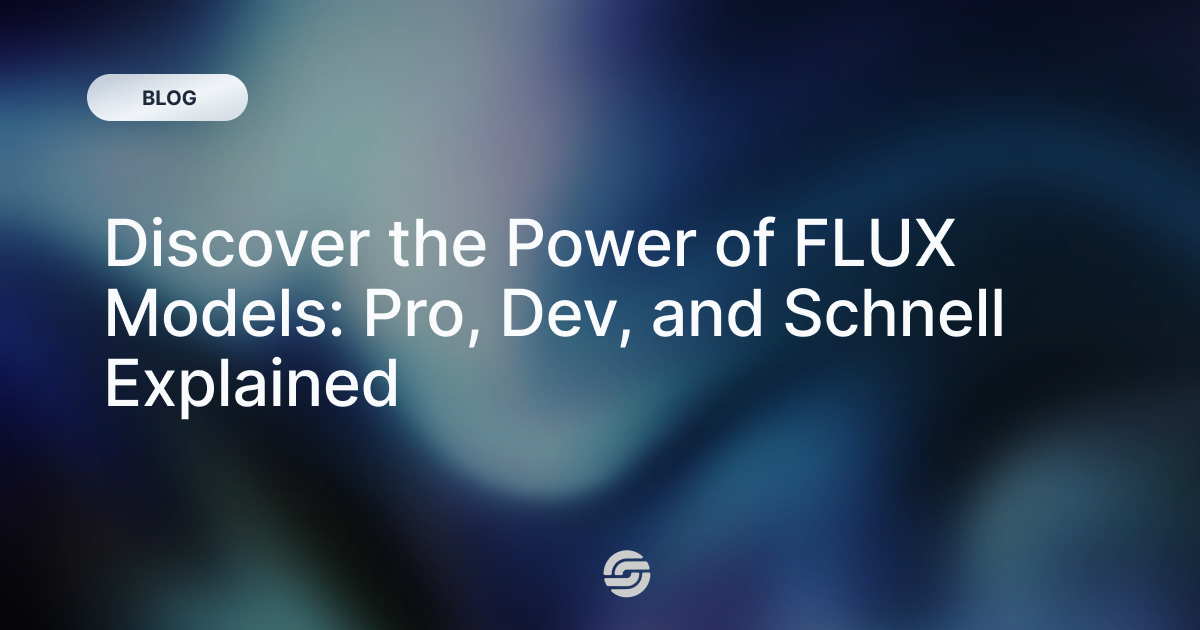
If you're passionate about AI-driven image creation, you’ve likely come across FLUX – the revolutionary image generation developed by Black Forest Labs. With four distinct models to choose from – Flux Tools, FLUX Pro, FLUX.1 Dev and FLUX Schnell – it’s essential to understand which one aligns best with your needs.
In this post, we’ll dive into the incredible capabilities of FLUX, explain the story behind its creation, and break down the differences between its models to help you choose the perfect fit for your projects.
What Is FLUX AI Image Generator?
FLUX is an advanced AI-powered image generator that transforms text prompts into highly detailed, visually captivating images. Built by Black Forest Labs, FLUX.1 leverages sophisticated algorithms to generate stunning visuals that accurately reflect the descriptions provided by users.
FLUX.1 is available in four versions: Tools, Pro, Dev, and Schnell, each designed with different use cases in mind. The Pro model offers premium image quality, making it perfect for high-level artistic and commercial projects. The Dev version is aimed at developers and researchers, while Schnell is optimized for fast, efficient image creation, catering to personal projects and quick experiments.
FLUX Models: Tools, Pro, Dev, and Schnell – Which One Should You Choose?
FLUX offers four specialized versions to suit various user needs:
Flux Tools
BFL released FLUX.1 Tools, a suite of models designed to add control and steerability to our base text-to-image model FLUX.1, enabling the modification and re-creation of real and generated images.
- FLUX Fill has state-of-the-art in-paint and out-paint capabilities, mask out parts of your composition to fine-tune your image to your needs.
- FLUX Redux to generate variations of your images, mix in text prompts or more images to give them a fresh look or change them completely.
- FLUX.1 Depth: Models trained to enable structural guidance based on a depth map extracted from an input image and a text prompt.
- FLUX.1 Canny: Models trained to enable structural guidance based on canny edges extracted from an input image and a text prompt.
FLUX.1 Pro – High-End Visuals for Professionals
- Best for: Commercial creators, artists, and designers.
- Features: FLUX.1 Pro offers top-tier resolution and intricate details, making it perfect for creating professional-grade images.
- Use Cases: It’s ideal for high-end advertising campaigns, commercial design projects, and digital art that demands exceptional quality.
As the flagship model, FLUX.1 Pro stands out for its superior output quality, delivering meticulously crafted images suited for high-level artistic or commercial work.
FLUX.1 Dev – Ideal for Research and Development
- Best for: Developers and researchers experimenting with AI.
- Features: FLUX.1 Dev mirrors the Pro model in quality but is optimized for research purposes, providing non-commercial usage rights.
- Use Cases: Great for testing AI image generation techniques or for academic projects requiring high-quality visuals.
FLUX.1 Dev provides powerful capabilities for research purposes, allowing you to test and develop AI image-generation methods in non-commercial environments without the need for premium licensing.
FLUX.1 Schnell – Fast and Efficient for Casual Use
- Best for: Hobbyists, quick prototypes, and personal projects.
- Features: Optimized for speed over detail, FLUX.1 Schnell generates images quickly, though with less emphasis on resolution.
- Use Cases: Perfect for users who need fast results, such as content creators and students working on personal or low-budget projects.
For quick, efficient image generation, FLUX.1 Schnell is the go-to model. It’s perfect when you need rapid image creation without the need for the highest resolution or intricate details.
Flux Models Comparisons
To show how FLUX works across its different models, we created five images with increasing complexity in the prompts. These comparisons highlight how each model handles different levels of detail and refinement.
Prompt 1: “a tiny astronaut hatching from an egg on the moon, tasty, food photography, dynamic shot”
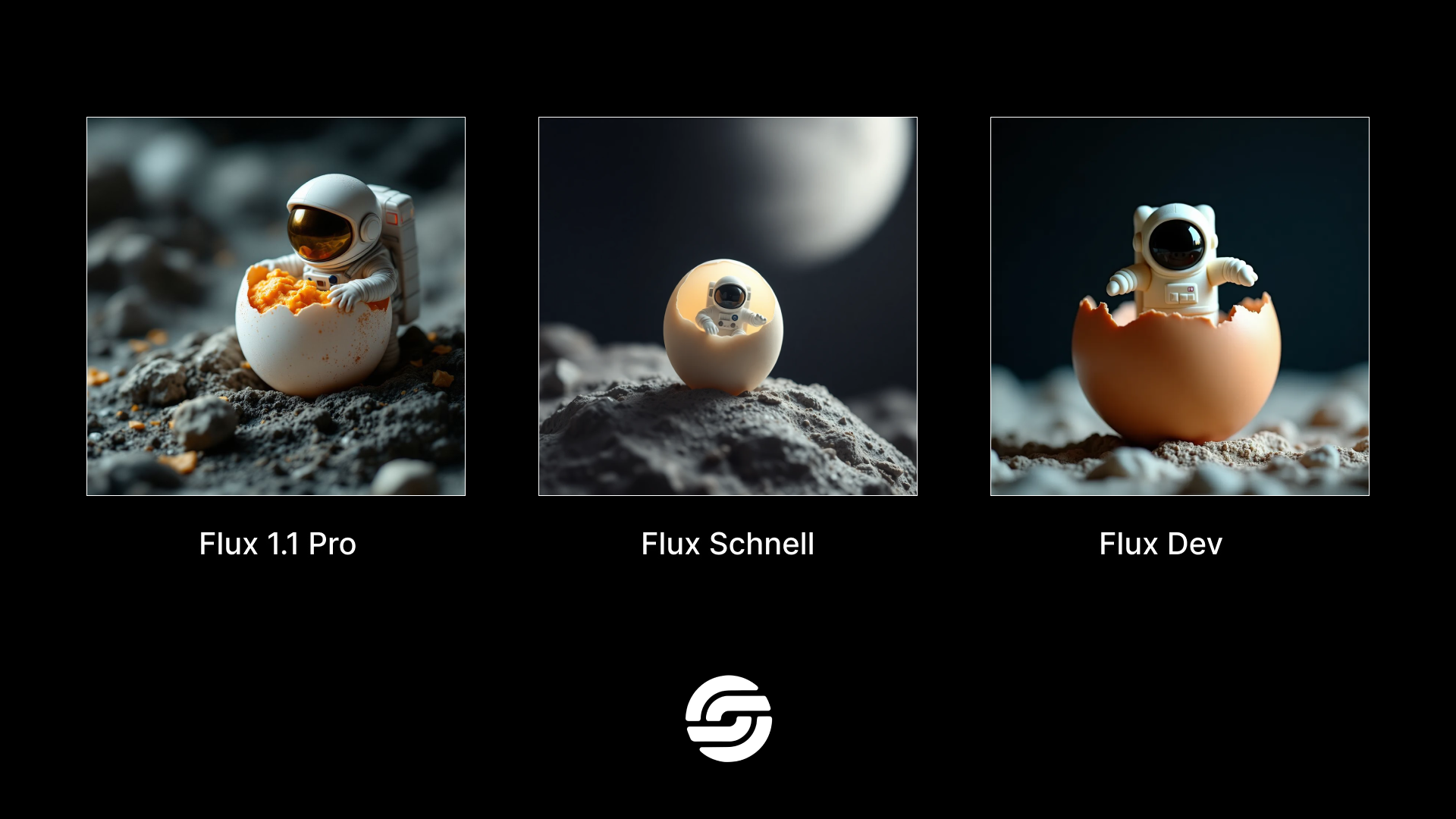
Prompt 2 : A cartoon-style city with colorful cars, people, and building
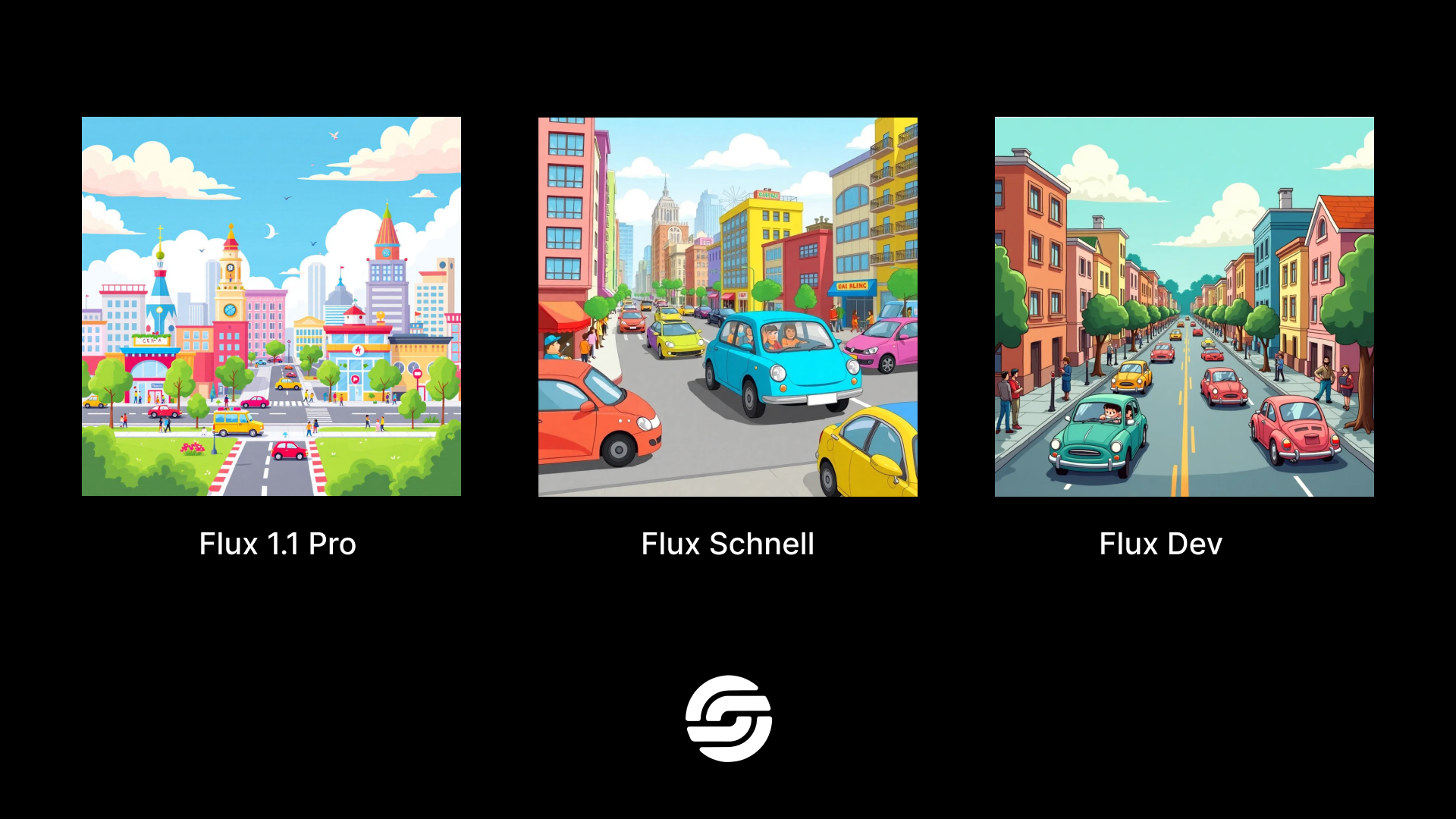
Prompt 3: A spa-like bathroom with a zen garden, bamboo accents, and a walk-in rainfall shower.

"Save Our Seas", a billboard featuring a powerful image of a whale with plastic in the background, designed in a photorealistic style.
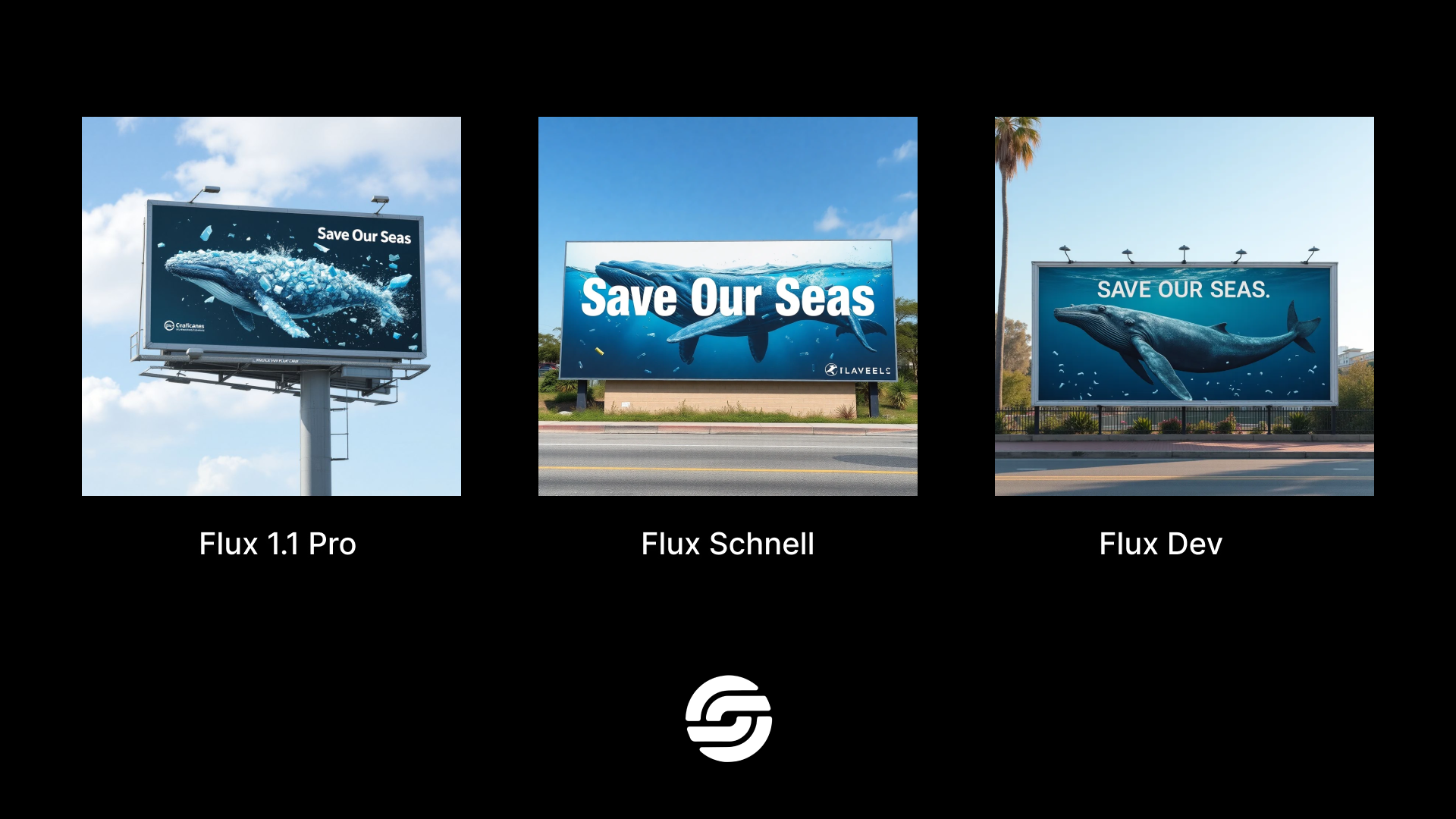
Eachlabs AI Model Comparison
Run your compression to understand response time, cost, and quality dynamically within seconds. You can quickly evaluate how various models perform based on your specific needs.
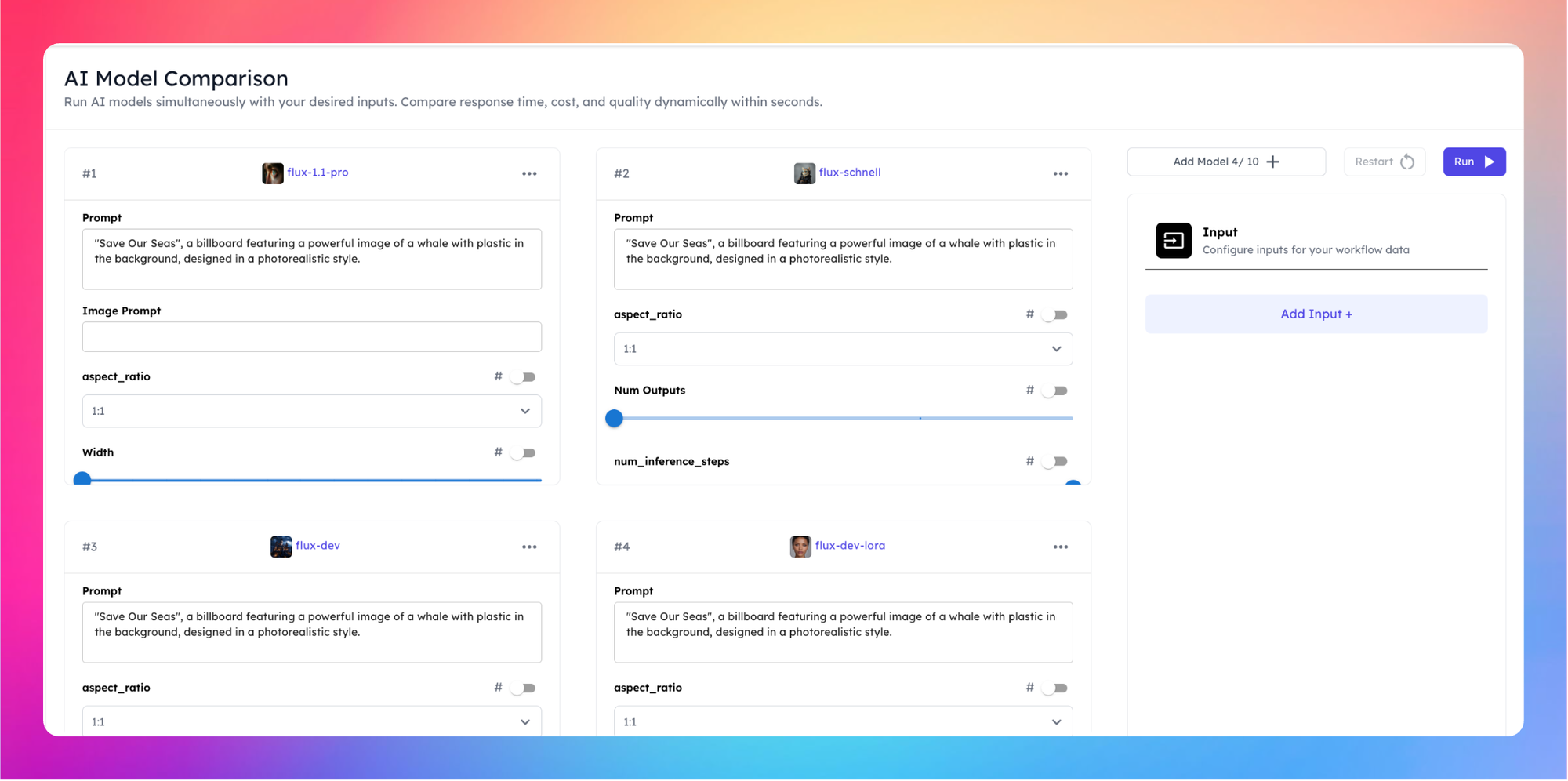
How to Use Flux?
You can use Flux models on the Eachlabs workflow engine and also combine and run other AI models in one place.
To use FLUX with the Eachlabs workflow engine:
- Log in to your Eachlabs account.
- Create a new workflow.
- Add FLUX by searching for it in the model library (choose from FLUX.1 Pro, Dev, Schnell and others).
- Configure the input with a text prompt for image generation.
- Optionally, connect other models for added functionality.
- Test the workflow, then click Run to generate images.
- Review the output and use or integrate it to your application via using Eachlabs SDK.
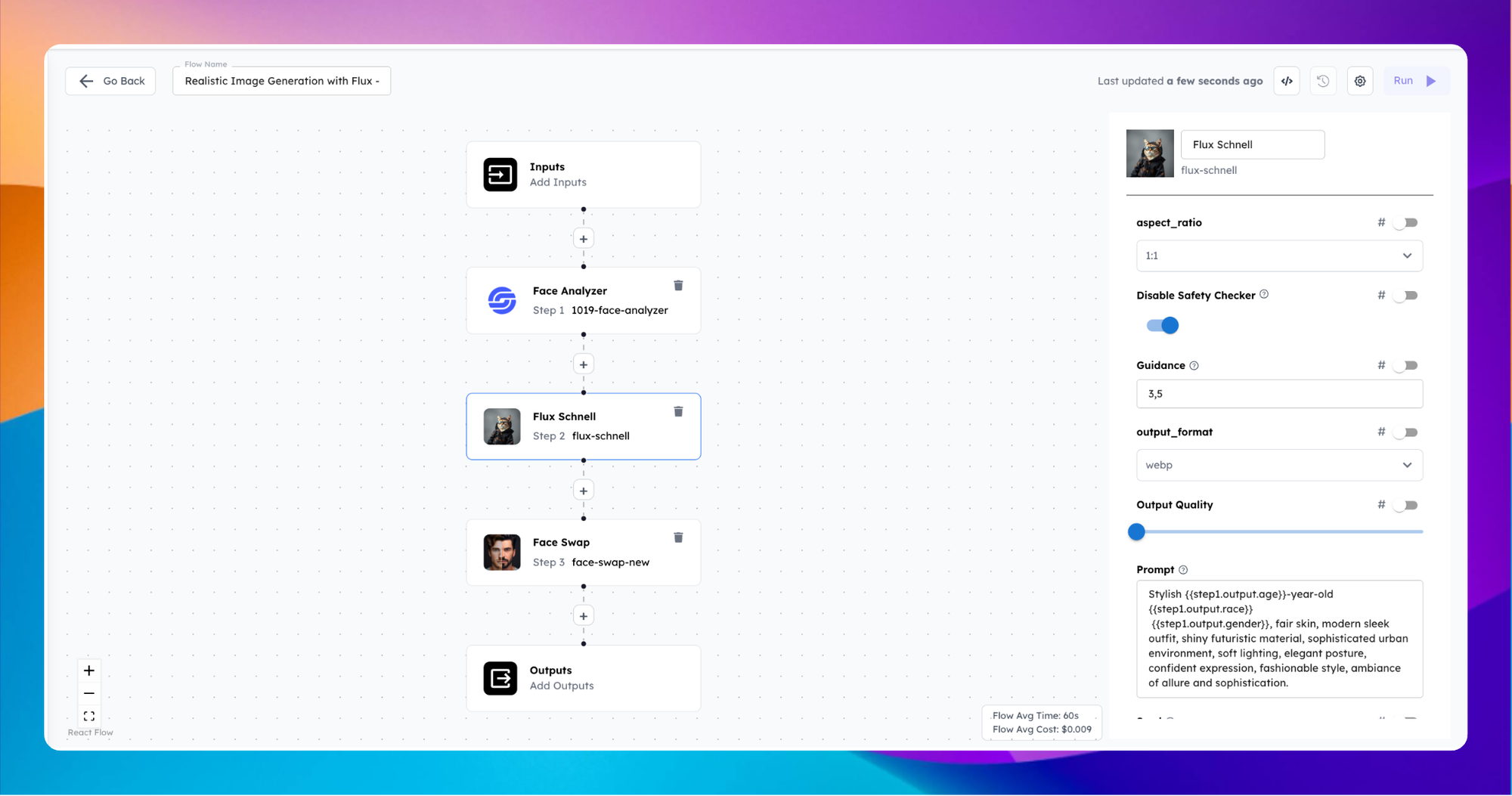
Conclusion
In conclusion, FLUX is a powerful AI image generation model that provides flexibility and exceptional results across different models, from Pro to Schnell. By integrating FLUX with Eachlabs, you can build your workflow using multiple AI models seamlessly in one place. With its easy integration and robust capabilities, FLUX opens up new possibilities for building AI-driven image generation apps and creative workflows.
